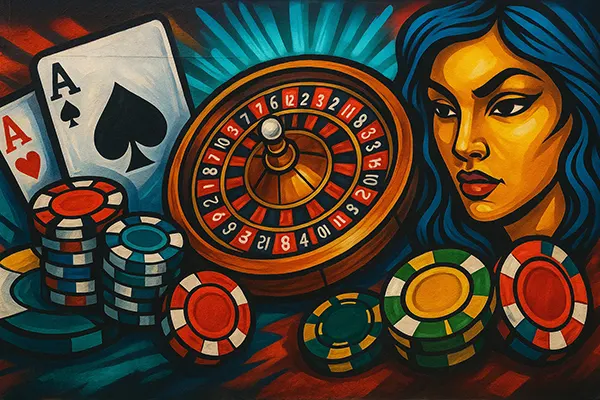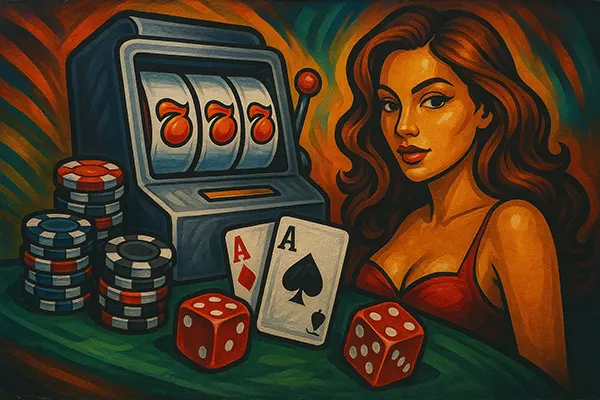
The Image of Casinos in Contemporary Street Art Culture
Street art has long been a form of social commentary, capturing the collective imagination of communities while also addressing broader cultural and political themes. In recent years, artists have turned their attention to the imagery of casinos, integrating symbols such as playing cards, roulette wheels, and poker chips into murals across cities worldwide. This visual language reflects both the allure of gambling and its complex role in modern society, inviting viewers to reflect on issues of luck, risk, and human desire.
Symbols of Gambling in Murals
The presence of gambling-related symbols in murals is not coincidental. Cards, dice, and roulette tables serve as universal metaphors that communicate ideas of chance and fate. Artists utilise these motifs not only to illustrate the glamour associated with casinos but also to highlight the uncertainty that defines much of human experience. The richness of these symbols allows creators to engage audiences in discussions about risk-taking and decision-making that extend far beyond gambling itself.
In Berlin, for example, murals depicting oversized dice and colourful poker chips transform grey urban walls into vibrant storytelling canvases. Such works often blur the line between playfulness and critique, suggesting both the excitement and the unpredictability inherent in games of chance. These pieces resonate particularly in neighbourhoods where nightlife and leisure industries are a central part of the local identity.
Similarly, in cities like Kyiv, street artists have portrayed roulette wheels and card decks in large-scale works, merging local cultural themes with global gambling imagery. Here, the art does not simply mimic Las Vegas glamour but instead connects the randomness of chance with the uncertainty of contemporary life in a rapidly changing environment.
Las Vegas and Macau: Murals in Gambling Capitals
Las Vegas, often described as the global capital of gambling, naturally features murals that embrace its iconic visual identity. Artists in this city frequently incorporate neon-inspired motifs, showcasing slot machines, card suits, and roulette wheels. These artworks amplify the existing spectacle of the city while also serving as reflective pieces that question the sustainability of a culture built on chance and consumption.
Macau, known for its vast gambling industry, has also seen the emergence of murals that depict playing cards and traditional Chinese imagery fused with casino symbols. Here, street art functions as a dialogue between tradition and modernity, addressing the tension between cultural heritage and the influence of global entertainment industries. These murals often convey a layered message about how gambling can both enrich and challenge the cultural identity of a place.
Together, the murals of Las Vegas and Macau highlight how casino-related imagery is used not only to reinforce local branding but also to create critical spaces where viewers can reconsider the social impact of gambling economies.
Street Art as Critique or Romanticisation
Street art is rarely neutral, and its representation of casinos often reflects broader debates about the role of gambling in society. Some works romanticise the glamour of high-stakes play, capturing the bright colours and seductive aesthetics that have long been associated with casinos. Such murals can be interpreted as celebrating human aspiration and the dream of sudden wealth.
However, many artists approach the theme critically, using the imagery of chips and dice as a way of exposing the risks and social consequences of gambling. Murals that show broken roulette wheels or fading card suits may symbolise the darker side of chance, emphasising issues such as financial loss, addiction, and disillusionment. These works remind viewers that beneath the surface of glamour lies a reality often marked by instability.
By blending celebration with critique, street art achieves a balance that engages the public on multiple levels. It acknowledges the enduring appeal of gambling symbols while also questioning the systems and industries that profit from them.
Case Studies in Berlin and Kyiv
Berlin’s dynamic street art scene has produced several striking murals centred on gambling themes. One large piece in Friedrichshain features a cascade of playing cards falling like leaves, a powerful metaphor for the fragility of fortune. This work has become a local landmark, sparking discussions among residents about risk, reward, and the unpredictability of urban life.
In Kyiv, artists have experimented with combining national motifs with roulette-inspired imagery. A notable example includes a mural in Podil where a roulette wheel doubles as a metaphor for the uncertainty of political and economic change. By intertwining gambling symbols with national identity, these works create a unique cultural narrative that resonates deeply with the city’s inhabitants.
Both Berlin and Kyiv illustrate how street art can go beyond decoration, becoming a tool for dialogue and reflection on themes that are both local and universal. In these contexts, the image of the casino operates as a lens through which society’s relationship with risk is examined.

The Global Dialogue of Street Art and Gambling Imagery
The use of casino symbols in street art demonstrates the ability of this artistic form to transcend borders. From the lights of Las Vegas to the districts of Macau, from the neighbourhoods of Berlin to the streets of Kyiv, artists employ a shared visual language to comment on universal human experiences. Chance, risk, and aspiration are concepts understood across cultures, making gambling imagery a particularly powerful tool in muralism.
At the same time, these artworks highlight the diversity of interpretations. While one city may emphasise glamour, another may focus on critique, and yet another may blend both approaches into a nuanced reflection. This diversity underscores the flexibility of street art as a medium capable of addressing complex and sometimes controversial themes without losing accessibility.
Ultimately, the representation of casinos in street art reveals more than a fascination with games of chance. It speaks to society’s broader struggles with uncertainty, ambition, and the search for meaning in unpredictable circumstances. The murals become public spaces of conversation, where viewers can reconsider the role of gambling not only as entertainment but also as a metaphor for life itself.
Future Directions of Casino-Themed Murals
Looking ahead, casino-themed street art is likely to expand further, especially as urban spaces continue to evolve and global issues reshape public conversations. Themes such as sustainability, digital gambling, and economic inequality may soon appear alongside traditional roulette and card symbols, reflecting new challenges and opportunities for artists.
Moreover, with increasing international collaboration between street artists, we can expect to see cross-cultural projects where casino imagery is reinterpreted in innovative ways. These collaborations will enrich the dialogue, creating murals that speak simultaneously to local contexts and global audiences.
In this way, the image of the casino in street art will remain a versatile and powerful subject, offering both beauty and critique while reminding viewers that chance and uncertainty are enduring aspects of human life.
